Earwax Removal
Book your appointment for professional ear wax removal at our nearest clinic, or benefit from expert care in the comfort of your home.
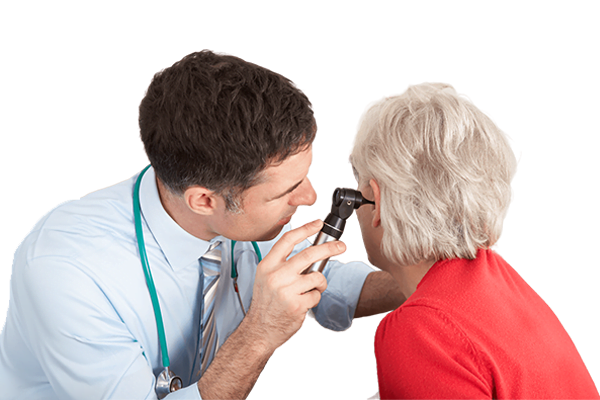
Why Choose
Hear4U for Ear wax Removal?

Qualified Professionals
Our experienced team of hearing aid audiologists and hearing aid assistants ensures you receive top-tier care and expert attention.
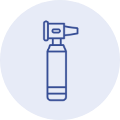
Video Otoscopy
We use video otoscopy to show you the condition of your ear, whether it’s wax buildup or a clear ear canal. This allows for informed decisions and follow-up actions.
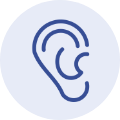
Multiple Removal Methods
We offer four different methods of wax removal, all performed in a headrest chair to ensure your safety and comfort.
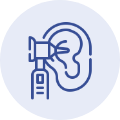
Post-Removal Checks
After earwax removal, we use video otoscopy again to show you the cleared ear, providing you with peace of mind and personalised aftercare advice.
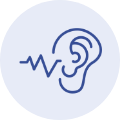
Comprehensive Diagnostics
If the ear is clear, we perform a hearing test and tympanometry to diagnose any underlying issues, with results communicated to your GP for further care.

Rigorous Sterilisation Protocols
All our earwax removal equipment is meticulously sterilised daily, and we use new, single-use instruments for each patient to ensure the highest level of hygiene and safety.
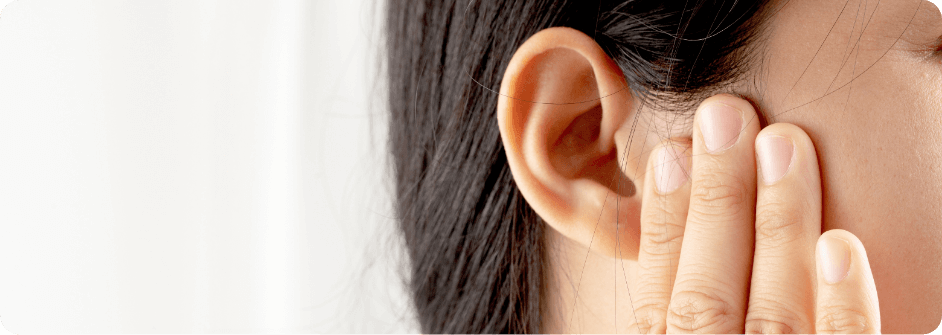
Understanding Earwax Buildup and Its Symptoms
Earwax, or cerumen, is a natural substance that keeps your ears clean, lubricated, and protected from bacteria. Normally, earwax moves out of the ear naturally through jaw movements like talking and chewing. However, excess earwax can build up due to factors like dusty environments, regular earbud use, ear canal shape, or aging.
Symptoms of Earwax Buildup
- A sense of fulness in the ear
- Discomfort or pain
- Difficulty hearing
- Ringing in the ears (tinnitus)
- Itchiness of the ear
- Discharge from the ear
- Unusual odour
- Dizziness
- Nausea
If you experience any of these symptoms, it might be time to call us.
Our Ear wax Removal Process
We make the earwax removal process simple, comfortable, and effective. Here’s what you can expect:
Step 1: Your Ear History
We start by asking about any prior ear conditions or previous earwax removal attempts to choose the safest and most efficient method for you.
Step 2: Ear Examination
Using a video otoscope, we examine your ear. This advanced tool provides a clear view of your ear canal and eardrum, which you can also see to better understand your condition.
Step 3: Earwax Removal
Based on our assessment, we’ll discuss the most suitable earwax removal options for you. The process typically takes 15-30 minutes, prioritising your comfort and safety.
Step 4: Post-Removal Check
After the earwax removal, we re-examine your ear with the video otoscope to confirm the wax is fully cleared, ensuring your satisfaction with the results.
Step 5: Audiologist Consultation
We’ll provide personalised aftercare advice tailored to your specific treatment, such as avoiding getting water in your ear after irrigation.
Step 6: Aftercare and Recovery
We arrange a follow-up check on your recovery and ensure the earwax removal has brought you the expected relief without complications.
Frequently Asked Questions
Is Earwax Removal Painful?
Ear wax removal in itself shouldn’t be painful, at most the ear wax can become so impacted that the procedure can be uncomfortable. There are a number of different methods for the removal of earwax, meaning we can usually find the one that best suits your ear’s situation. After the procedure we have a large amount of reading materials that can assist in maintaining your ear health with appropriate aftercare.
What ear wax removal methods does Hear4U offer?
Hear4U offers four earwax removal methods: microsuction, endoscopic microsuction, water irrigation, and manual removal. All our audiologists are highly experienced in performing these procedures, ensuring the best care for your ears.
What is Microsuction?
The microsuction earwax removal method includes using a small thin medical suction tube that is used alongside a microscope to gently remove earwax out of the ear canal. It is a modernised earwax removal technique that is heavily preferred by a large amount of patients. Due to its’ safety it it possible to use this earwax removal technique on individuals that have previously suffered from perferated eardrums, infections or just generally have weak inner ear skin lining. The earwax removal method does produce a bit of sound during the procedure, and a bit of a cold sensation can be felt from the metal tools. Overall a vast majority of clients say they were very happy with how hassle-free microsuction is, additionally it is a DRY procedure, meaning that as soon as the wax is taken out the client can be on their way.
What is Endoscopic Microsuction?
What is Water Syringing?
The water syringing/irrigation method of earwax removal uses a weak stream of body-temperature water to flush out earwax stuck to the patient’s ear canal walls. The water breaks down earwax and allows it to flow out into a container held just below the ear called a “noots tank” Many clients favour this method because of it’s gentle and calming water usage. Despite the comfort this removal method provides it is important to note that this form of removal is not appropriate for clients that have had previous or existing issues with their ear health – This includes but is not limited to : Suffering from vertigo, perferated eardrums, infection of the eardrums (resulting in discharge or mucus in the ear canal) and any ear surgery will require an overview by our audiologist to determine whether the procedure is safe for the individual.
What is Manual Removal?
Manual earwax removal consists of the Audiologist using a forecep in the ear, alongside the use of a microscope to gently pull out earwax that despite oiling is too hard to remove. This is a brilliant earwax removal alternative to the microsuction and water syringing methods. It is a dry method that produces no sound or buzzing during the procedure making it the preferred method for people who are easily startled, don’t like using water or have a large amount of impacted wax.
Is ear suction better than syringing?
Both ear suction (microsuction) and water irrigation (previously known as syringing) are safe and effective methods for earwax removal. Water irrigation now uses specialised equipment that controls the flow and temperature of water, making it a safe option. The choice between the two methods depends on the type of wax blockage and any specific contraindications, such as a perforated eardrum.
How often should I have earwax removed?
The frequency of earwax removal depends on your individual ear health and wax production. Some people may need it every few months, while others may only need it once a year, or not at all. It’s best to consult with an audiologist to determine the right schedule for you.
What should I do if I experience discomfort after earwax removal?
It’s normal to experience slight discomfort after earwax removal. If discomfort persists or you experience pain, discharge, or hearing loss, contact your ear care provider immediately. They can assess your symptoms and provide a GP reference if required.
Do the NHS provide earwax removal?
No, the NHS no longer routinely provides earwax removal services. The best way to have earwax removed is to go to private professionals like Hear4U. Our highly trained audiologists can safely and effectively remove earwax, ensuring your ears are healthy and clear.